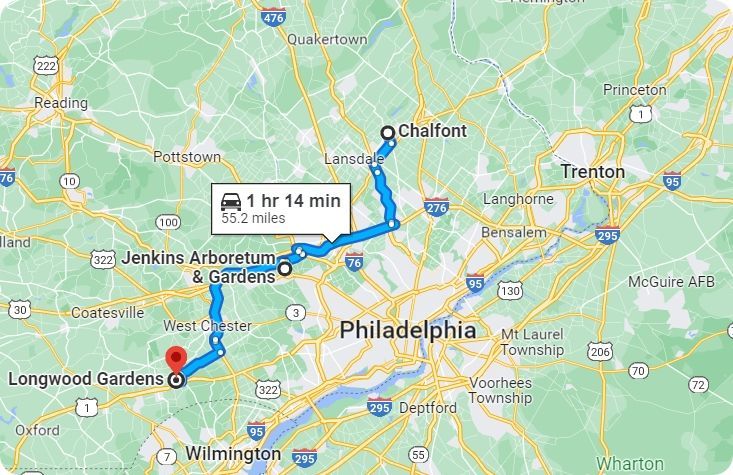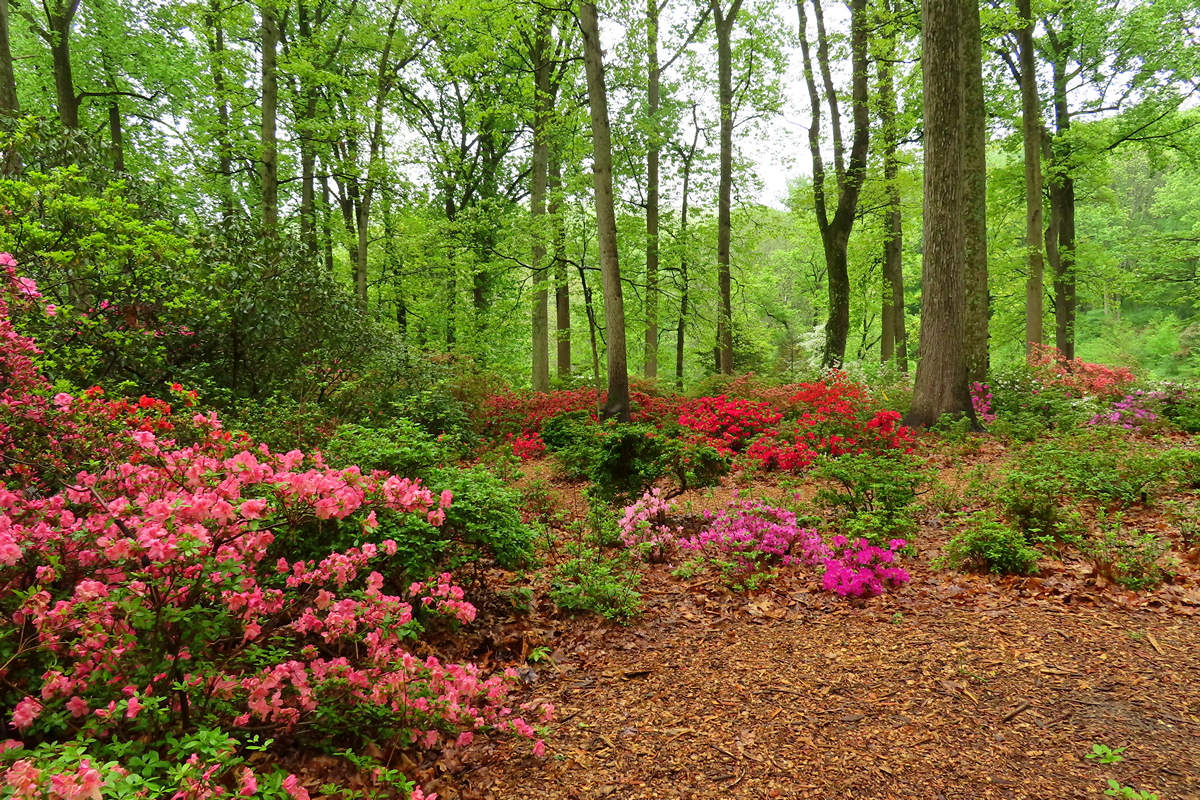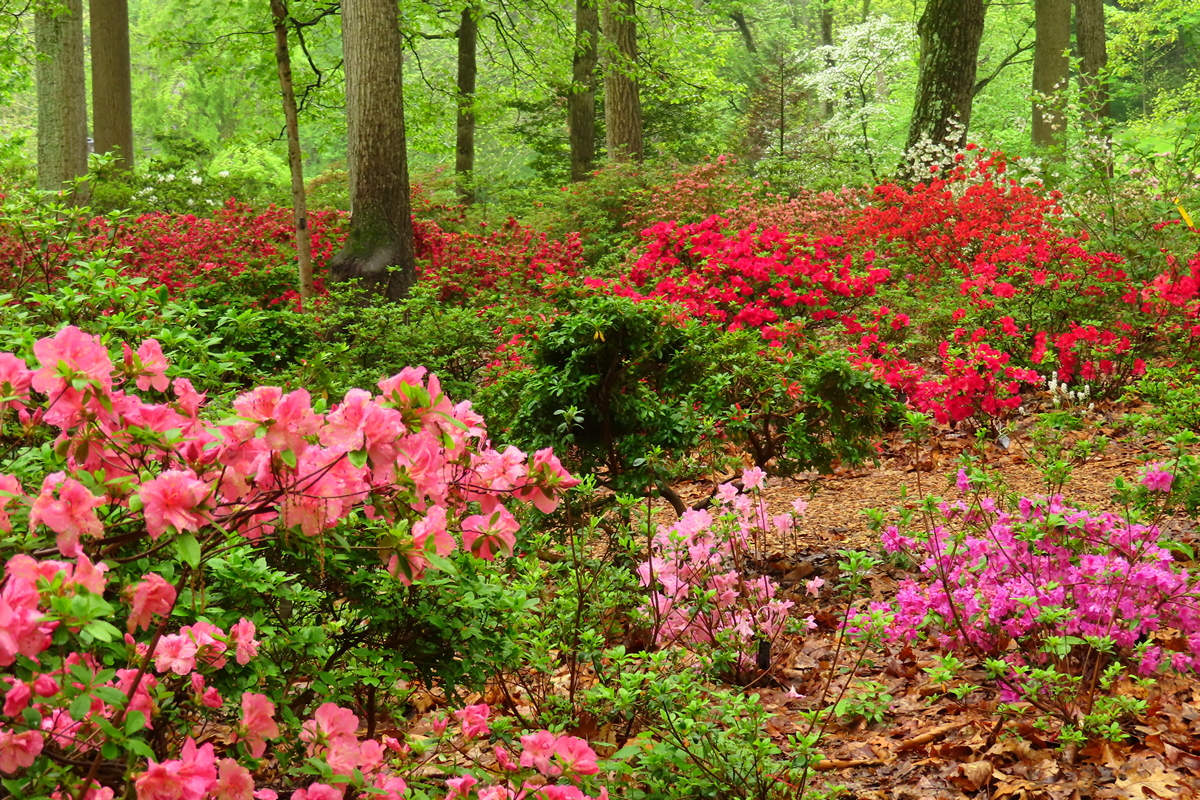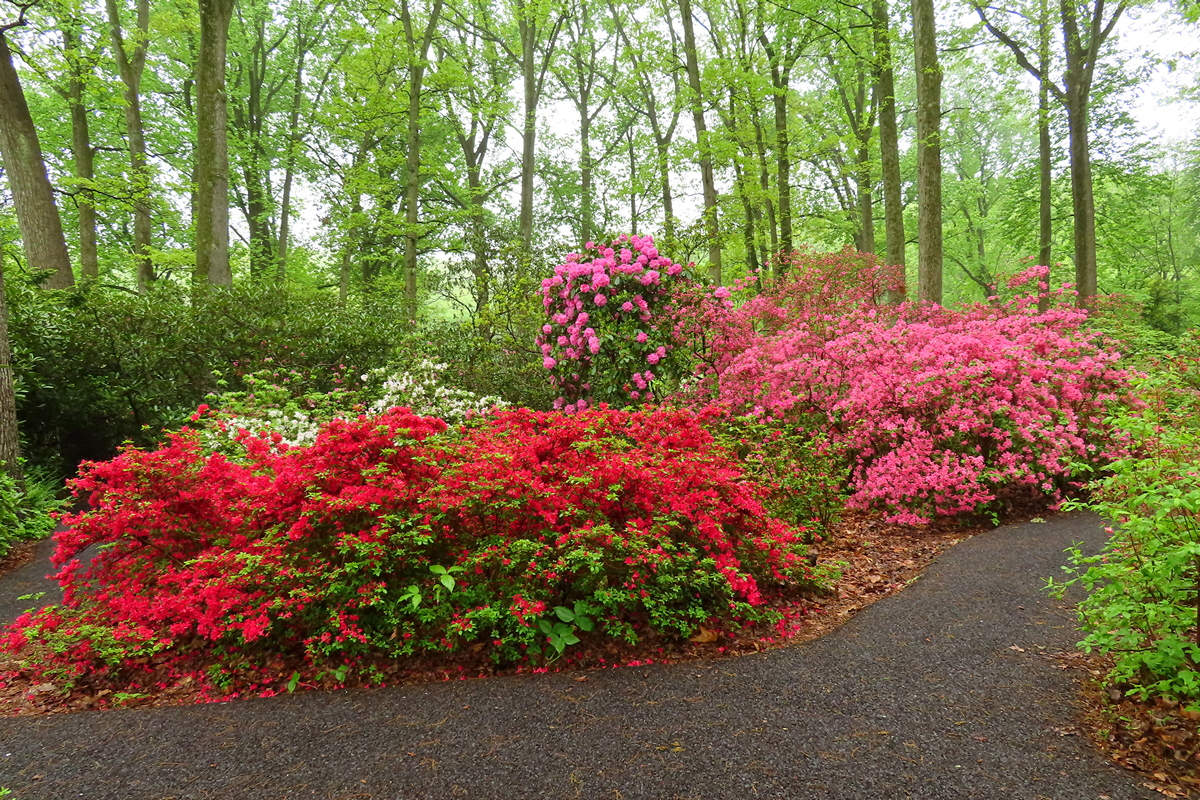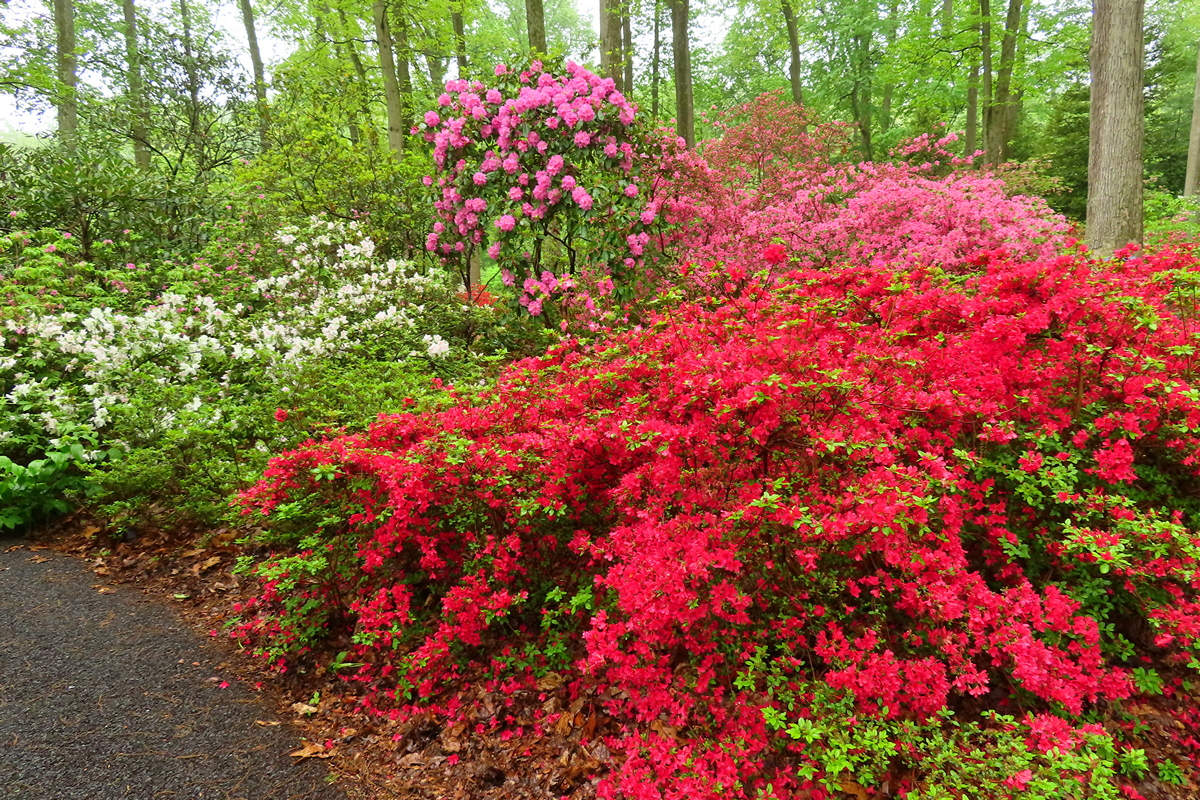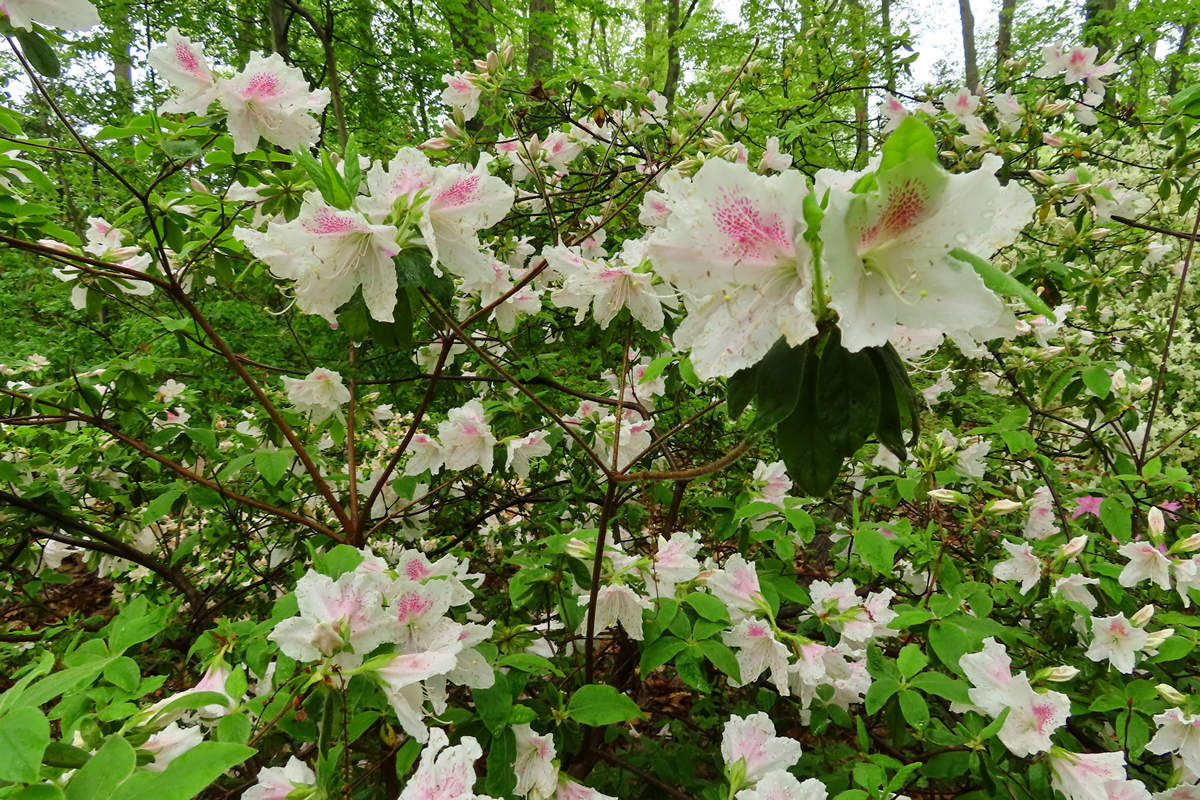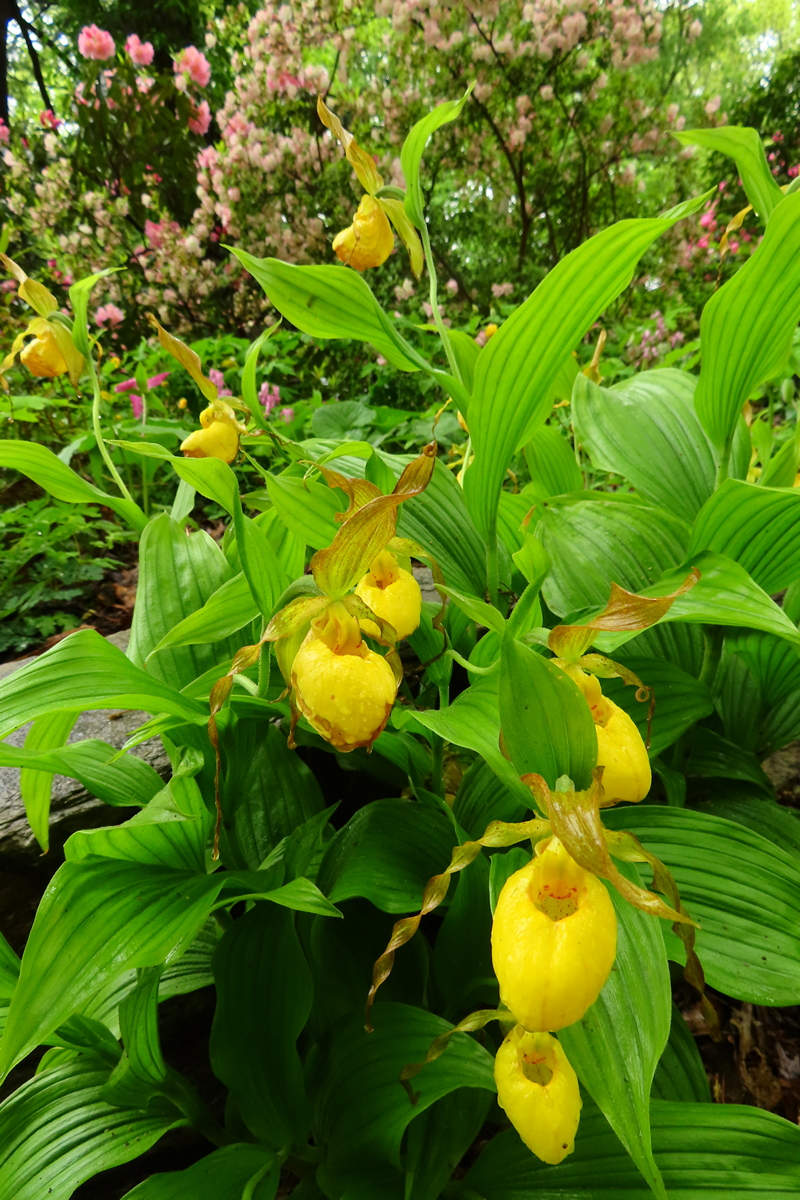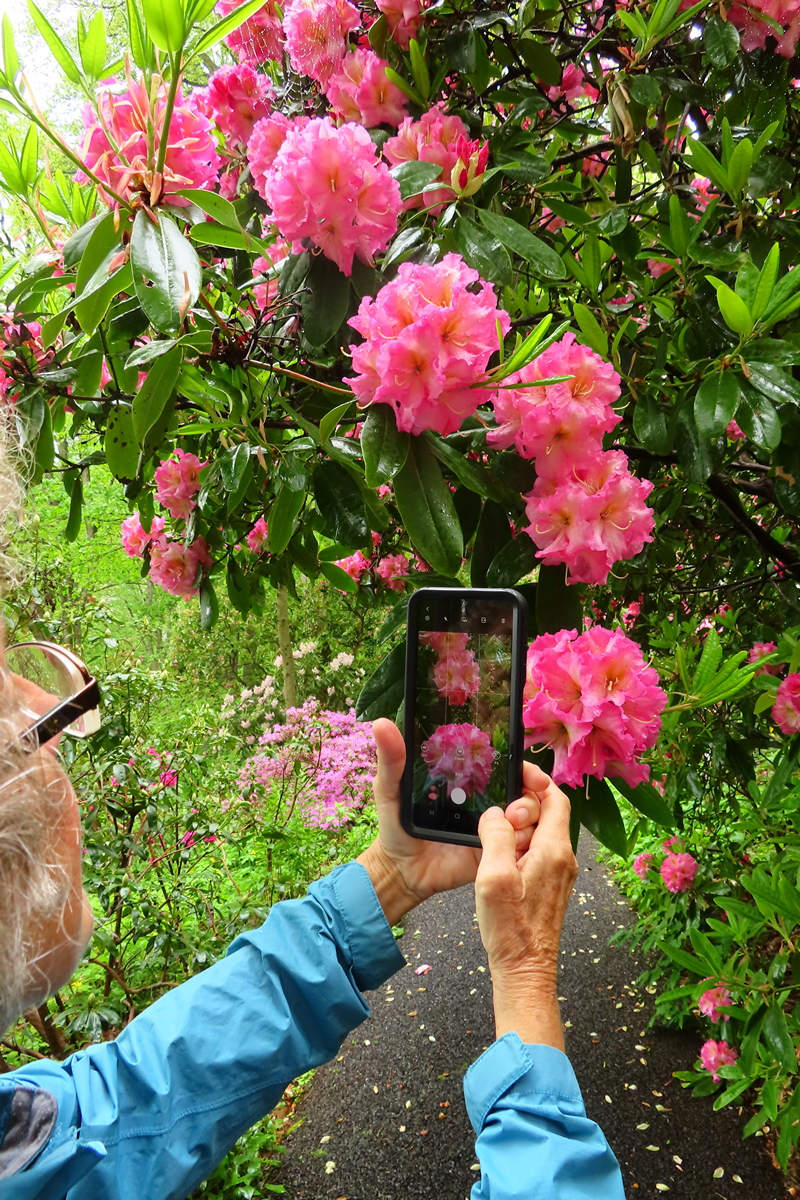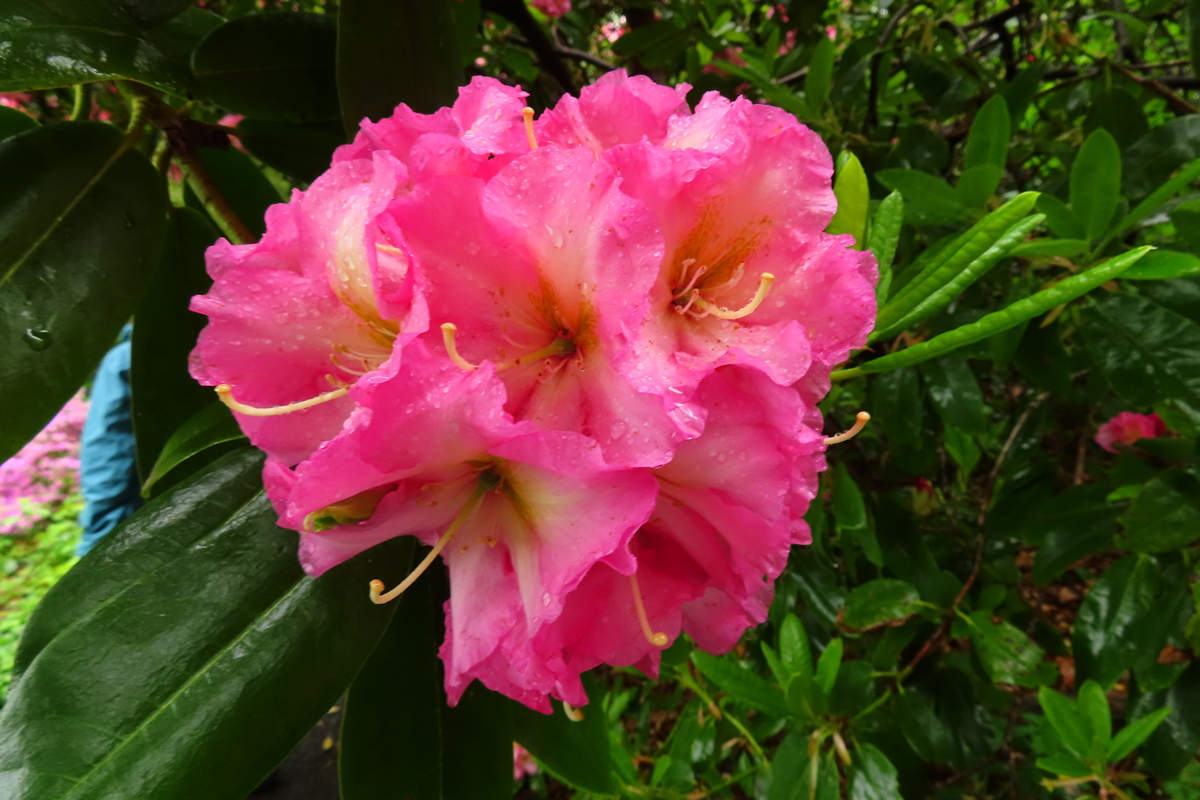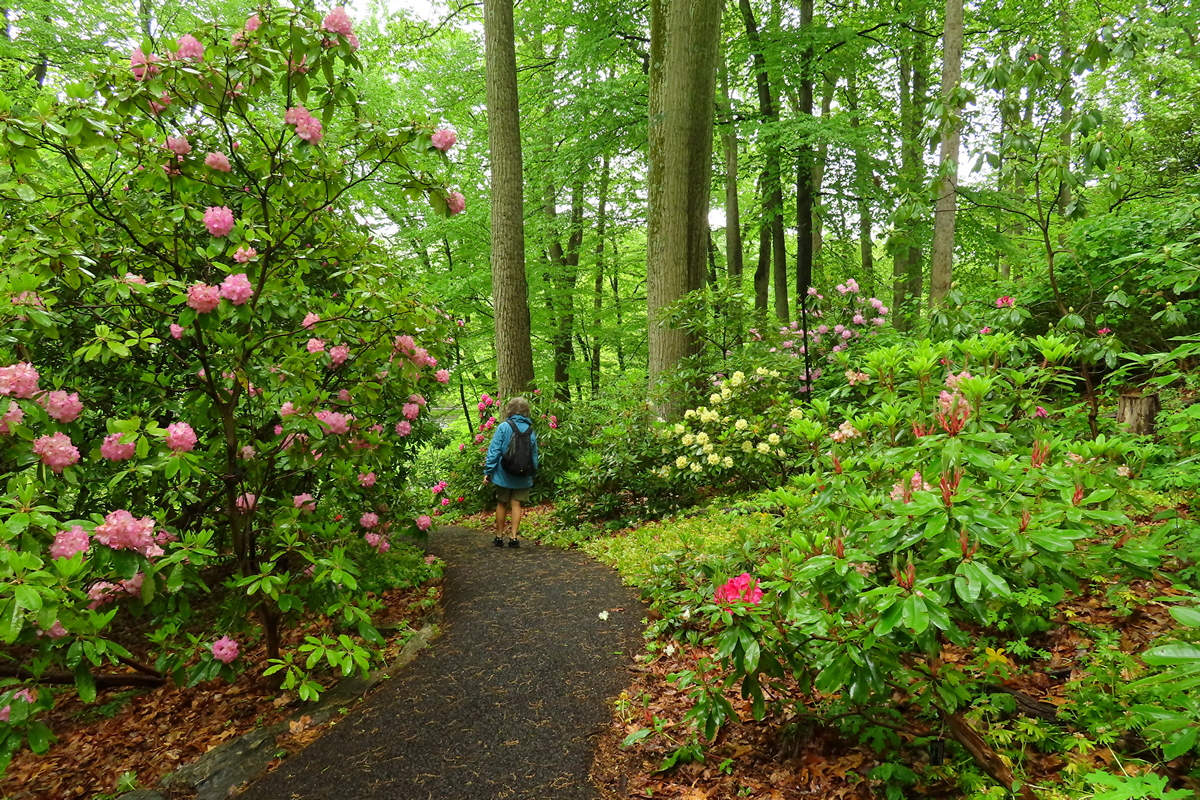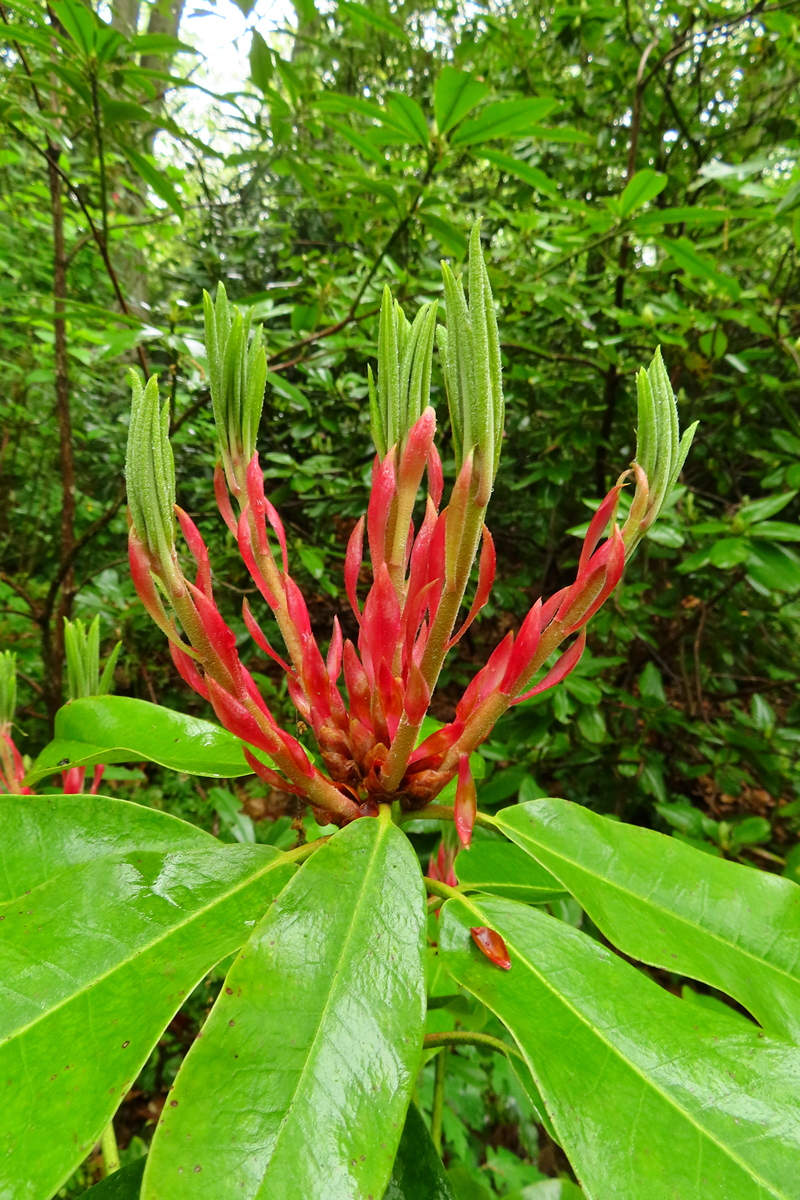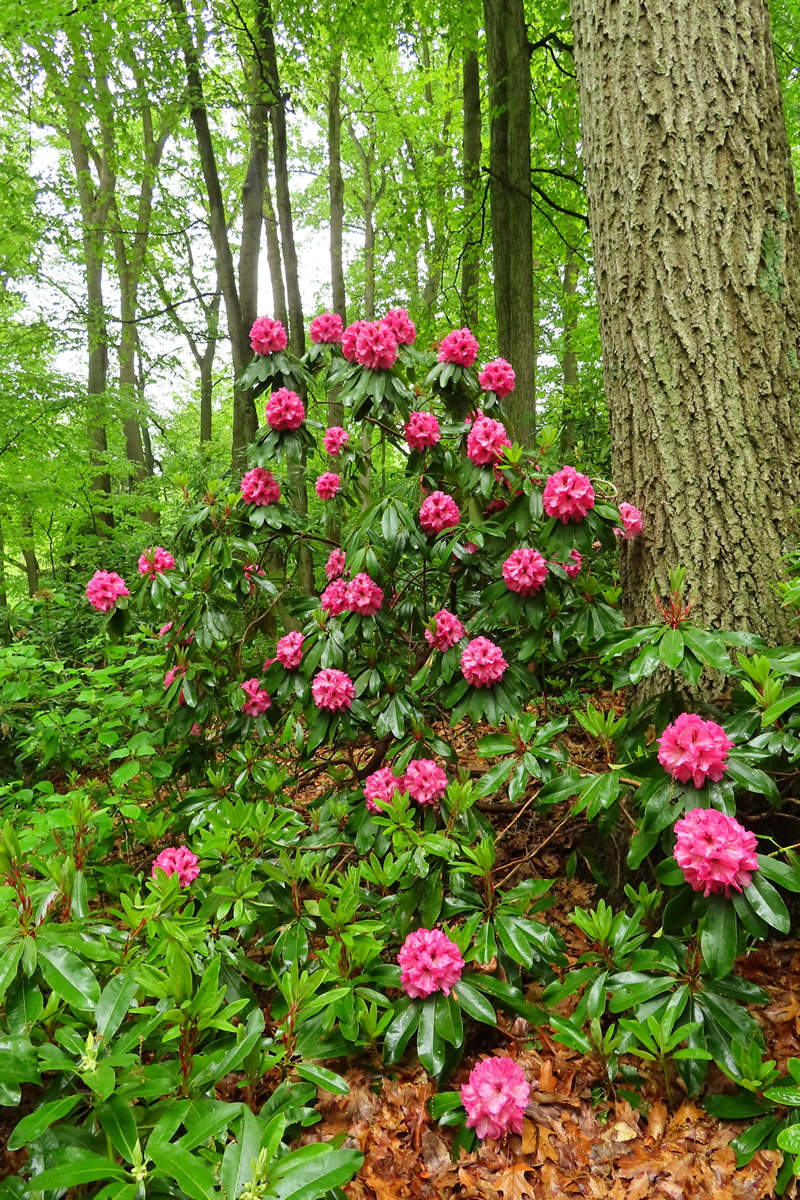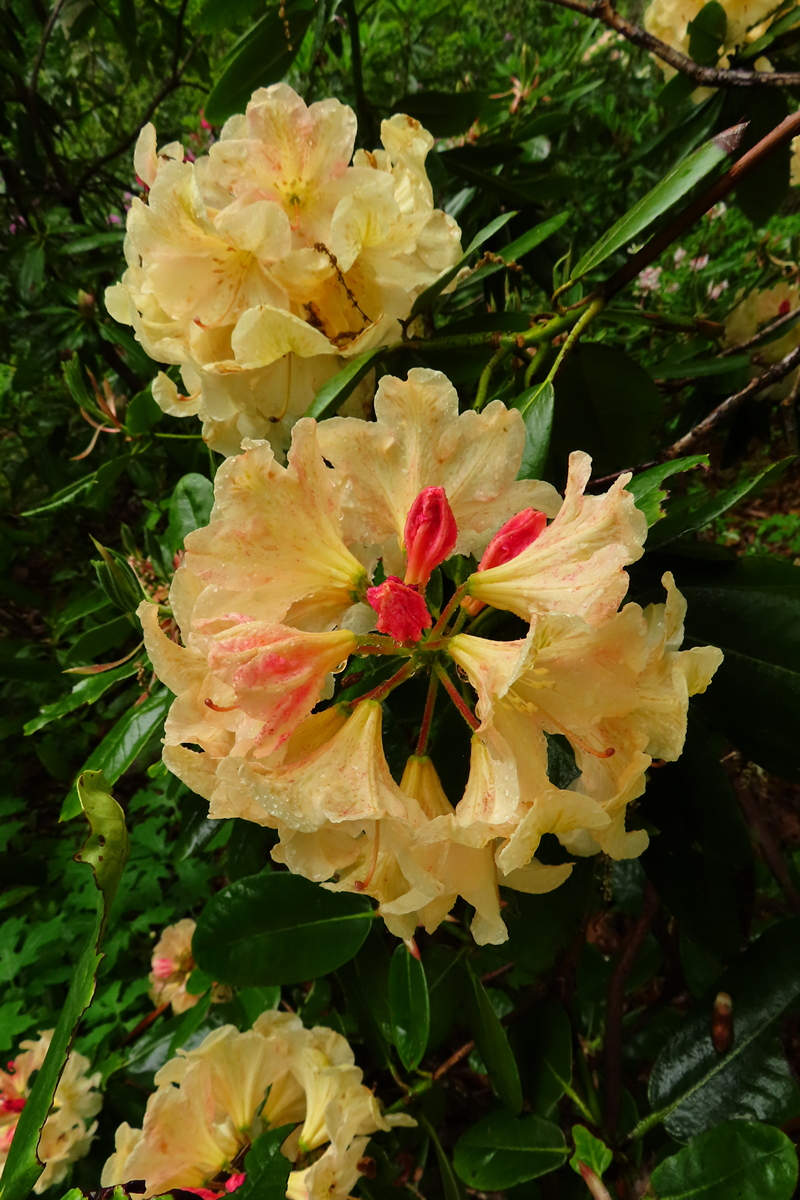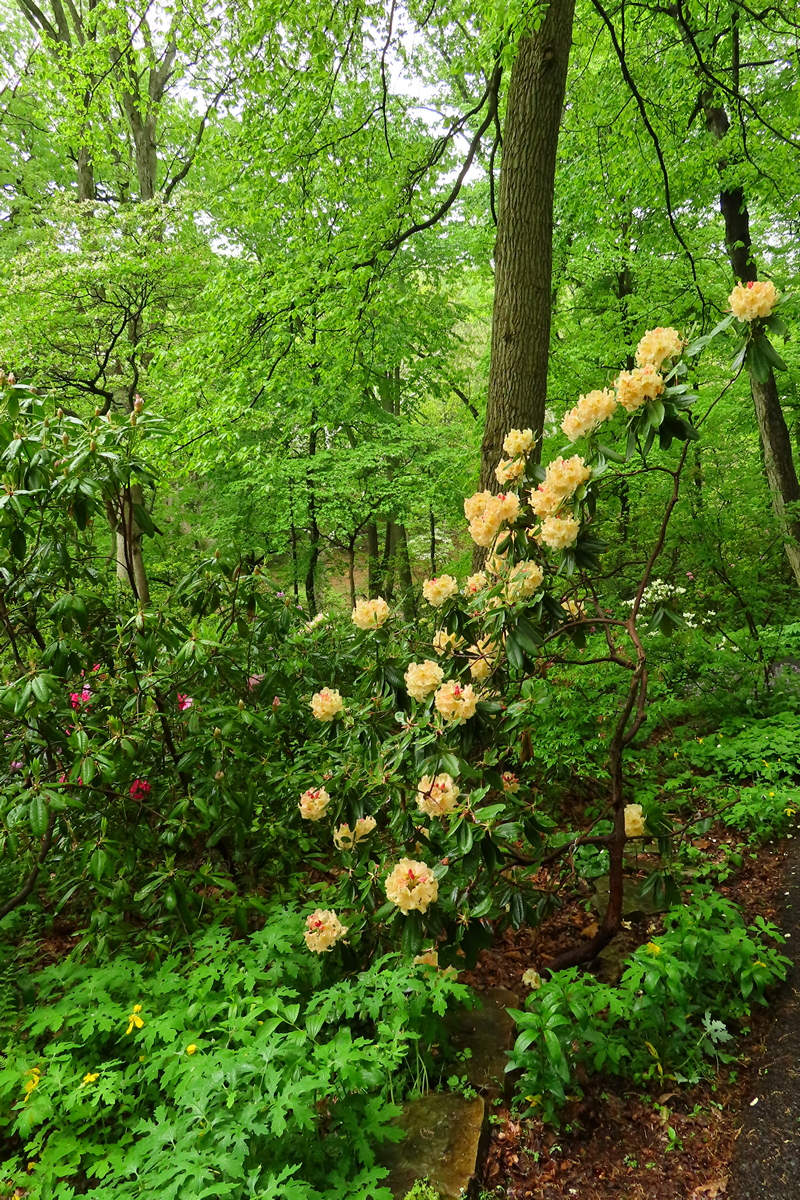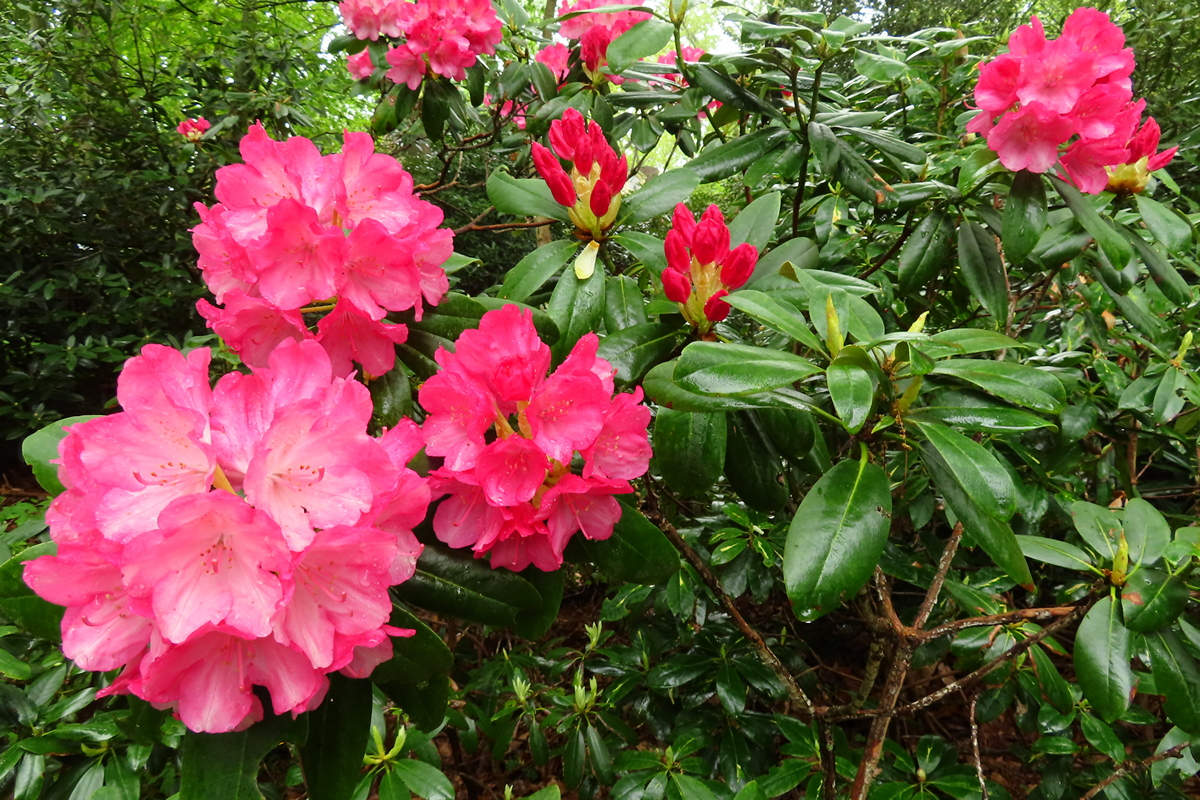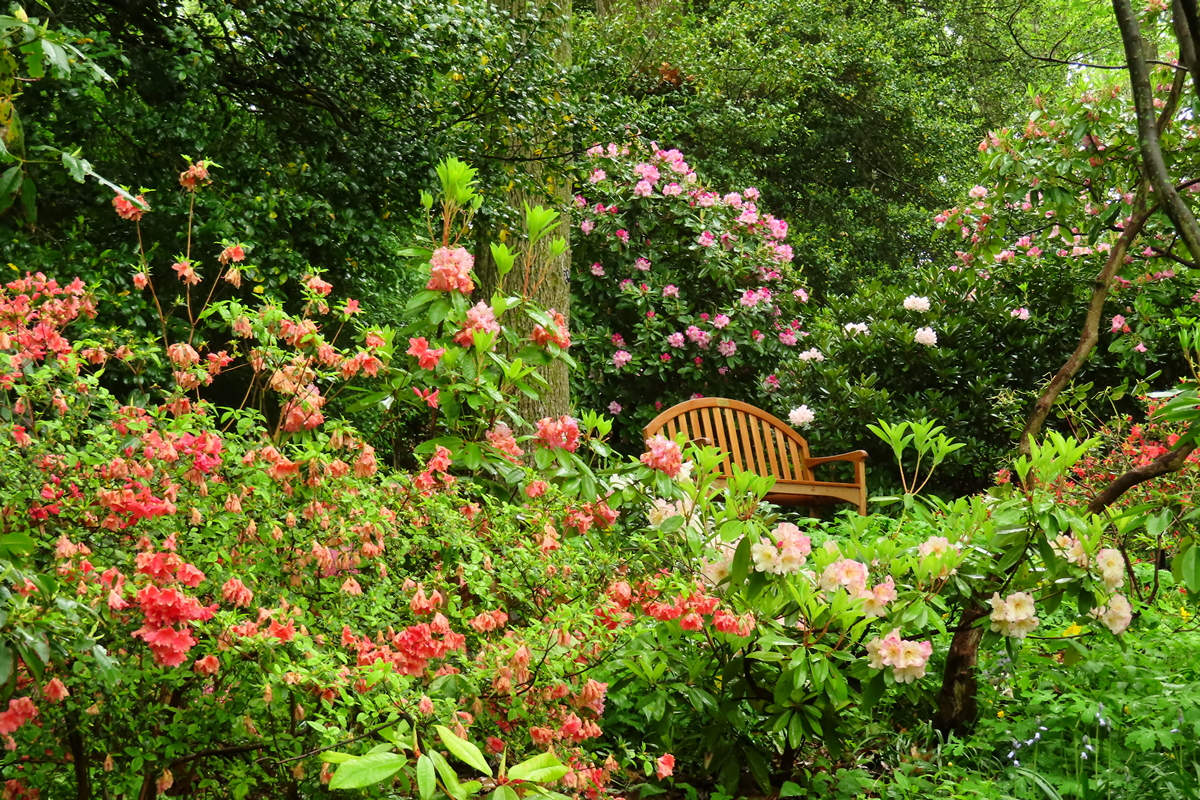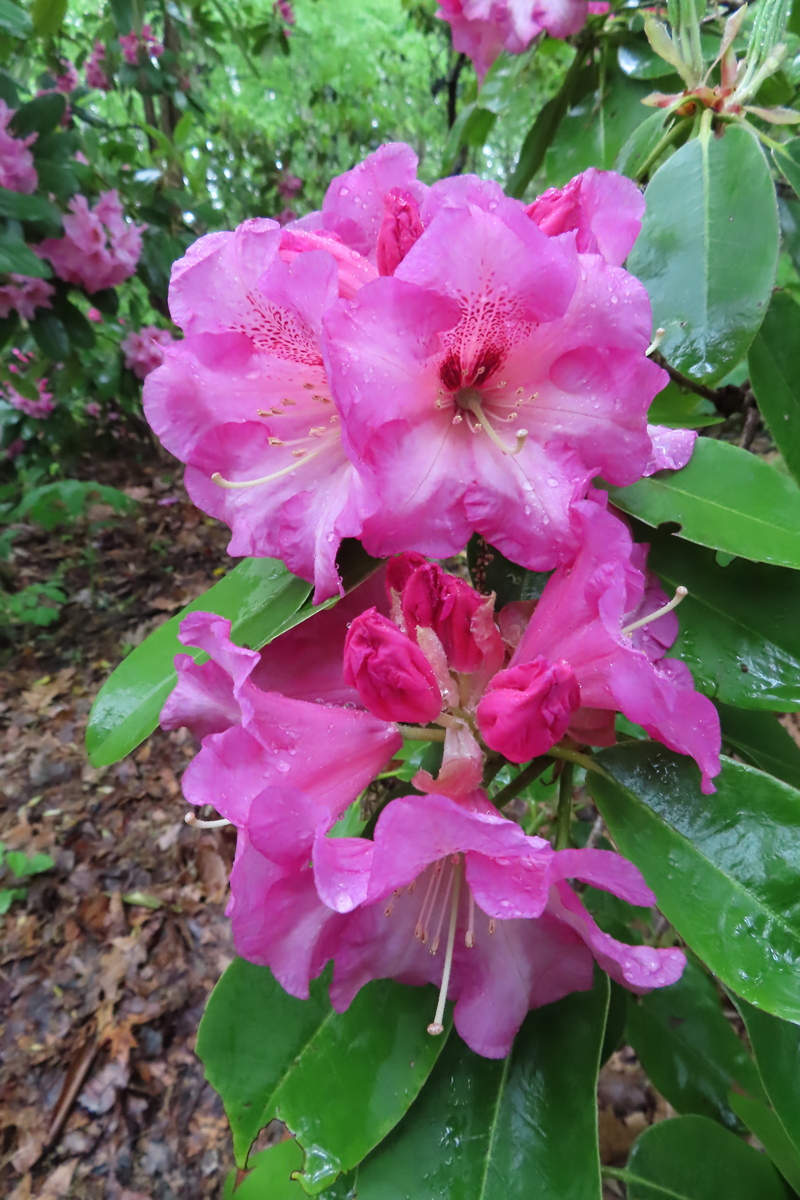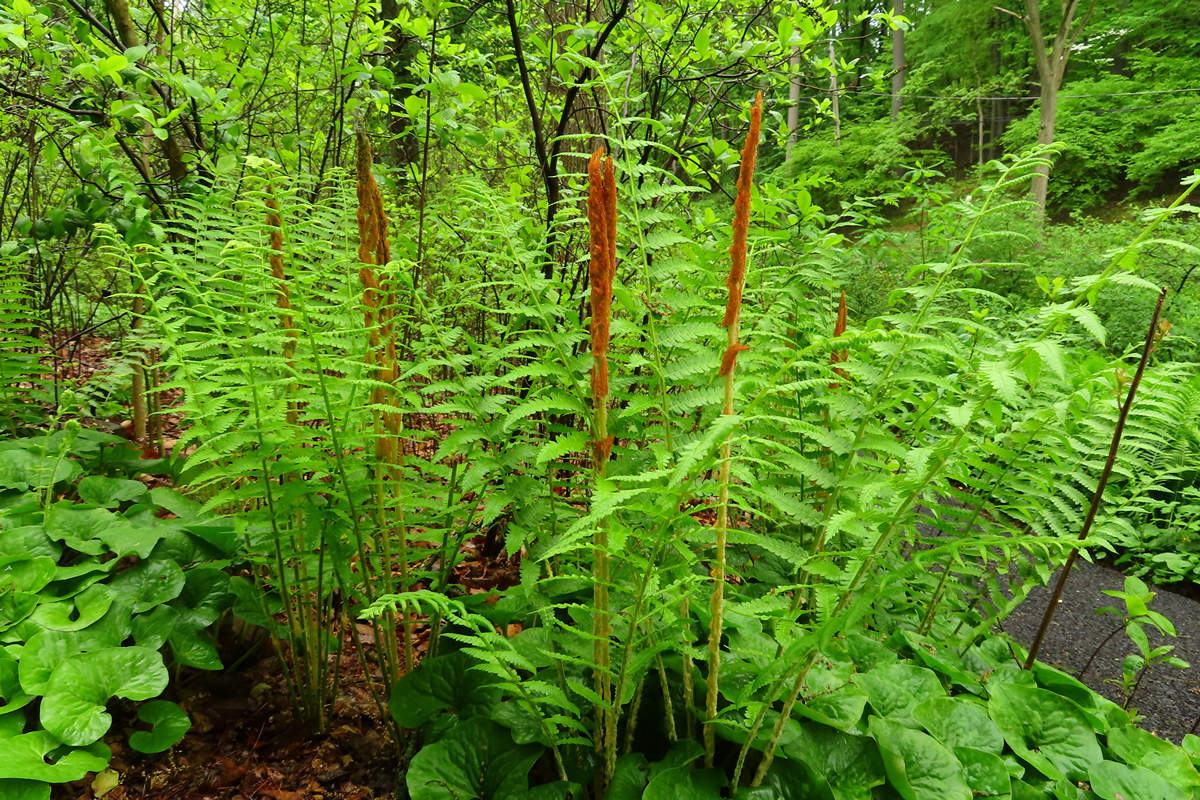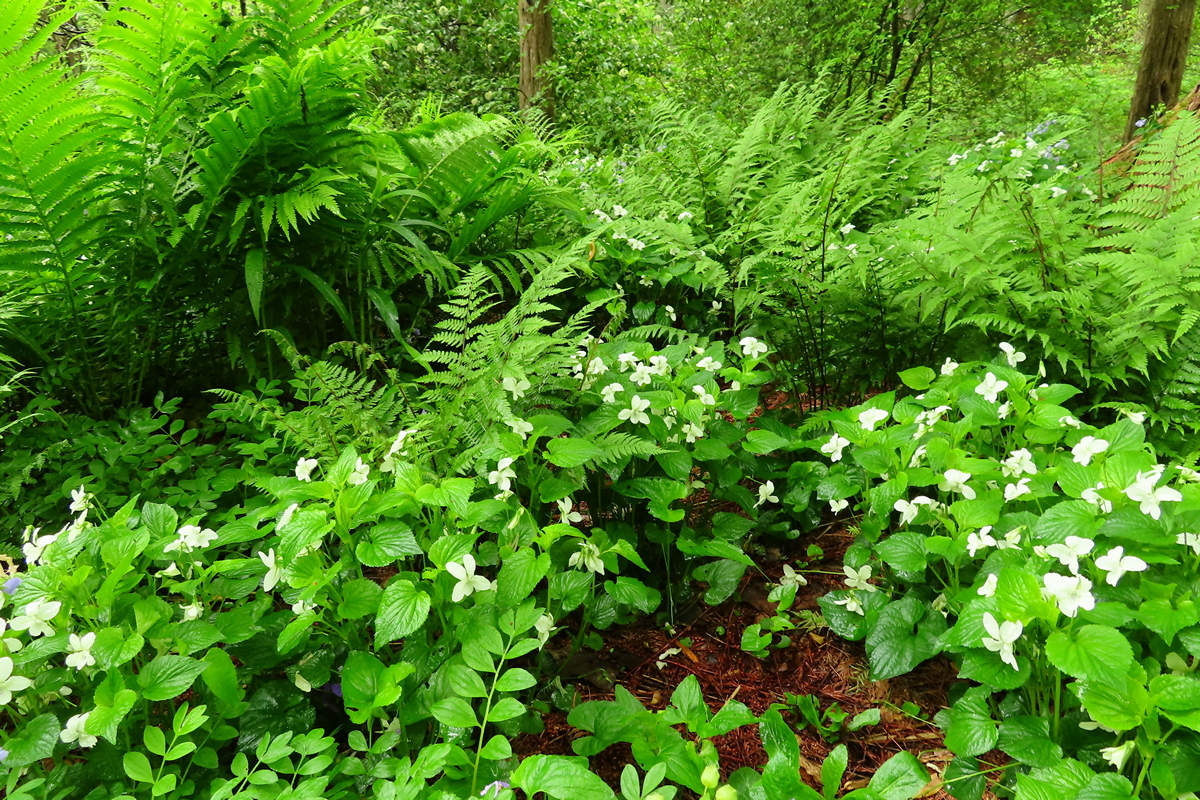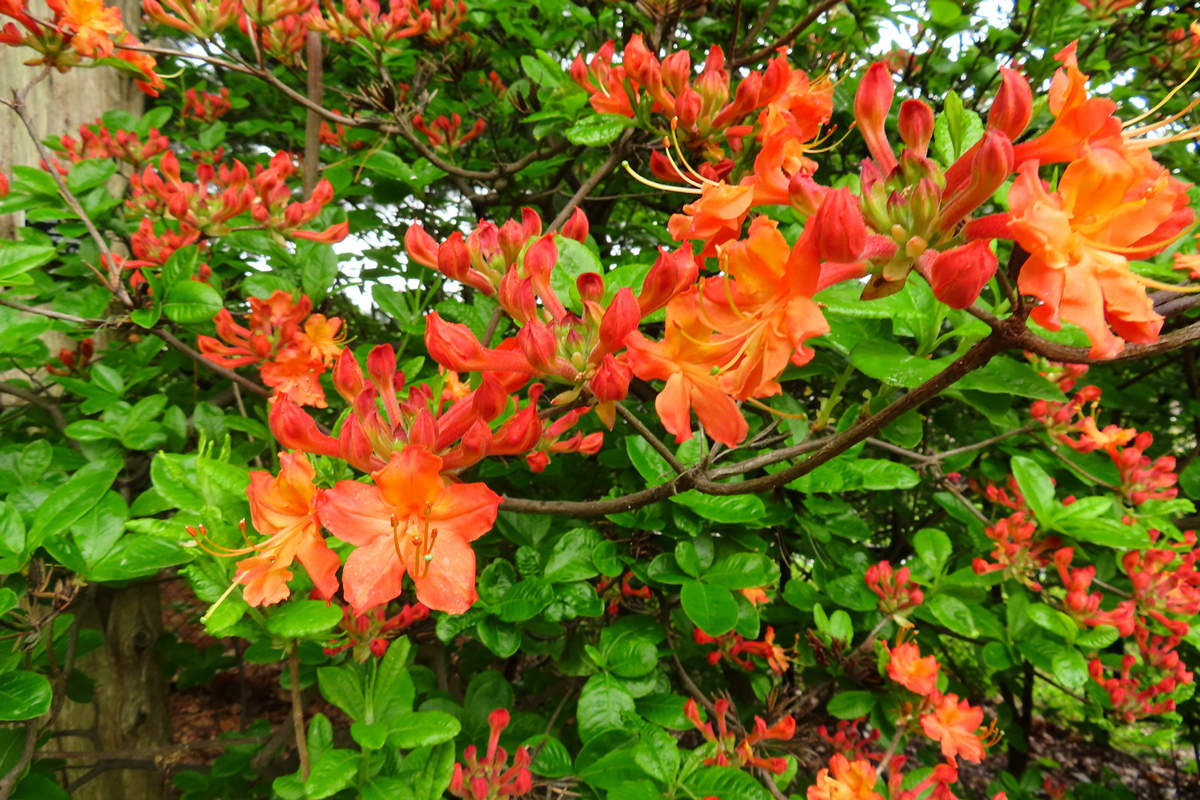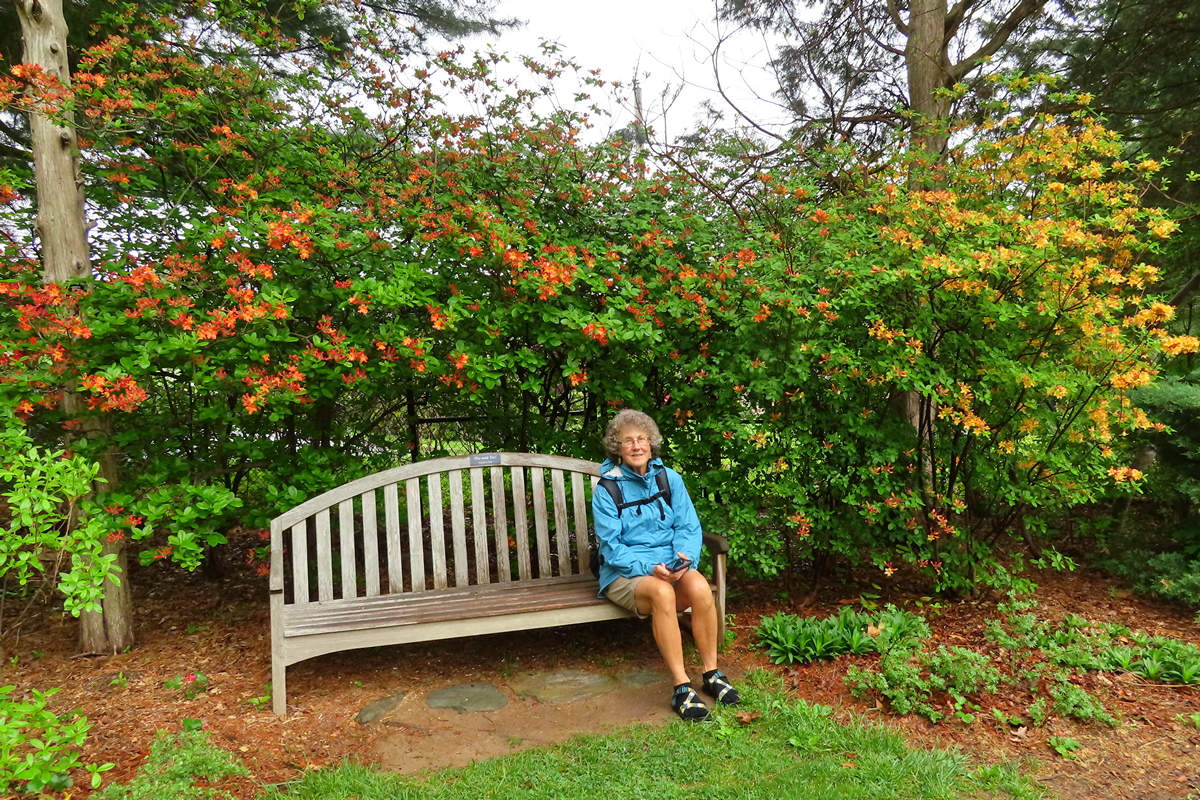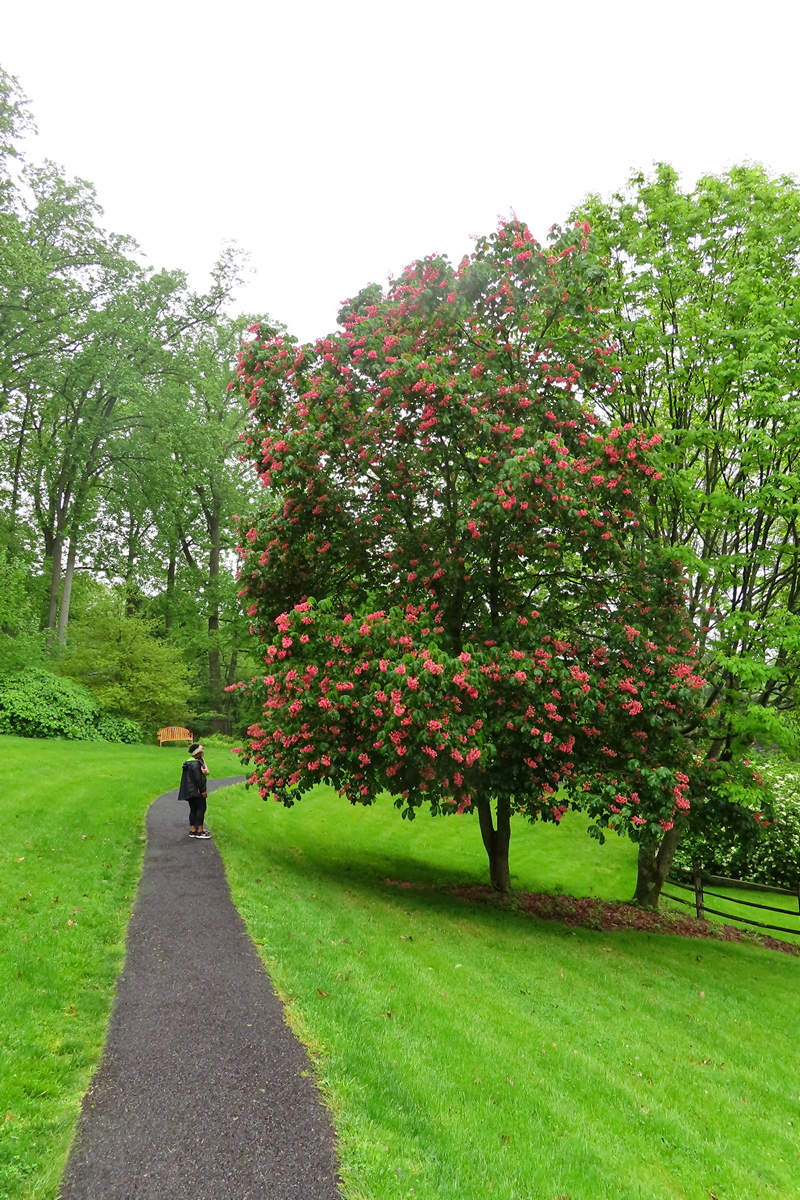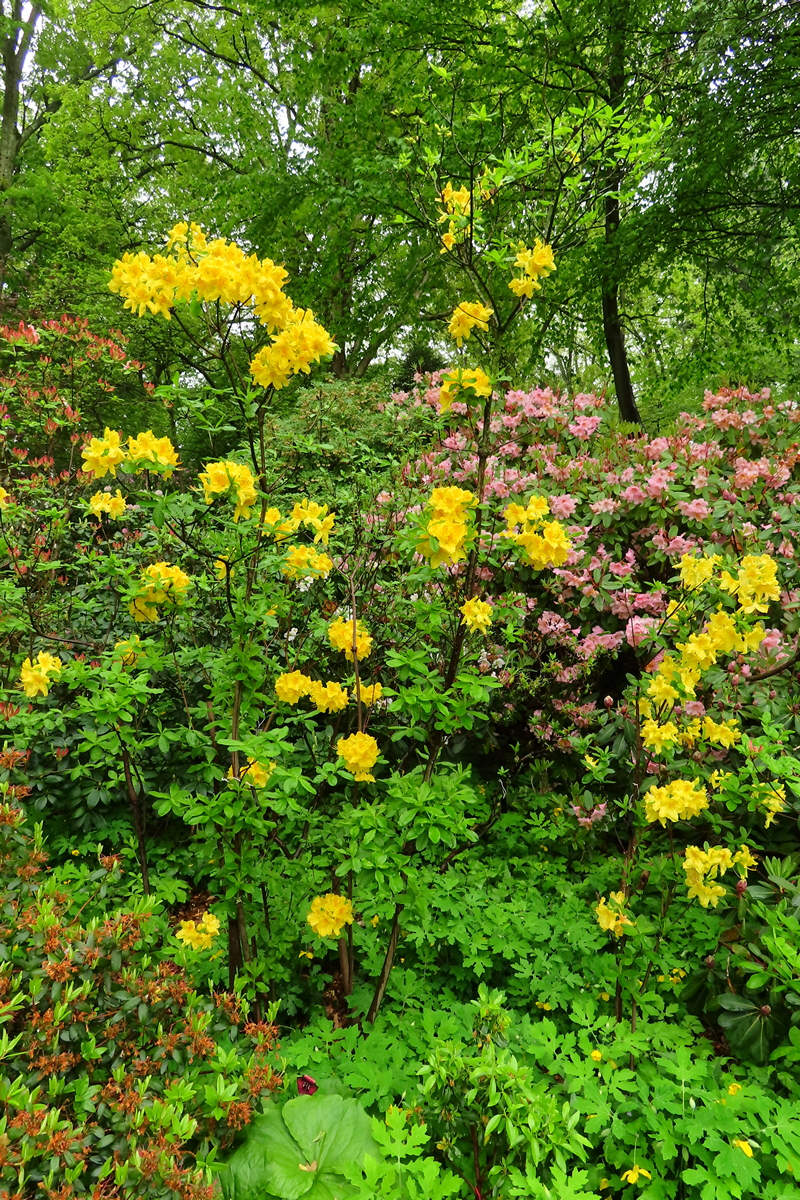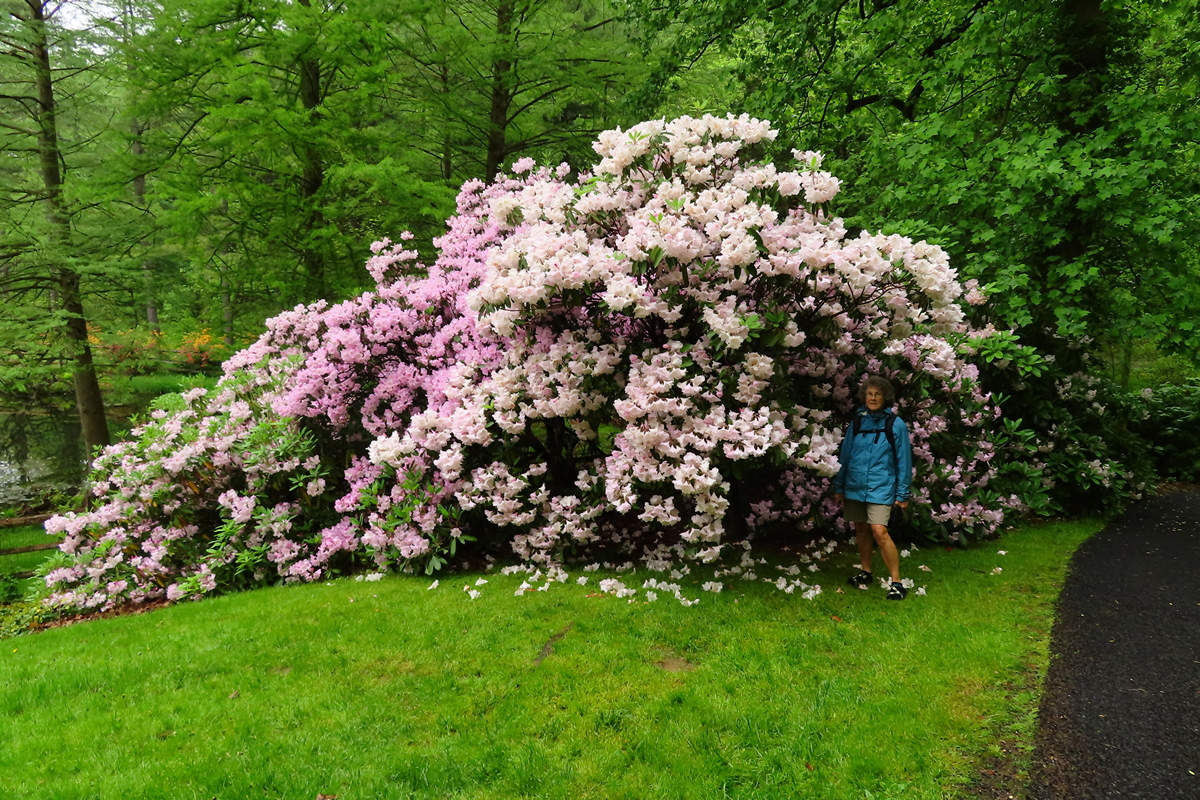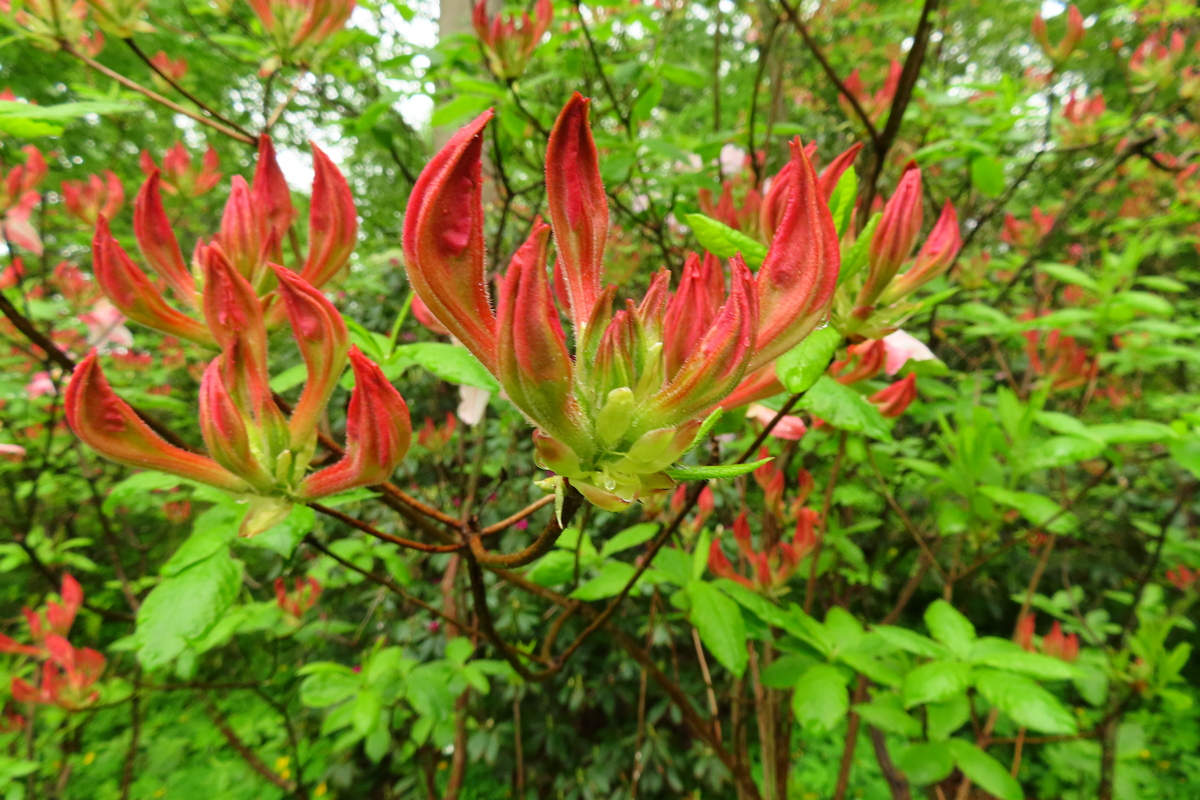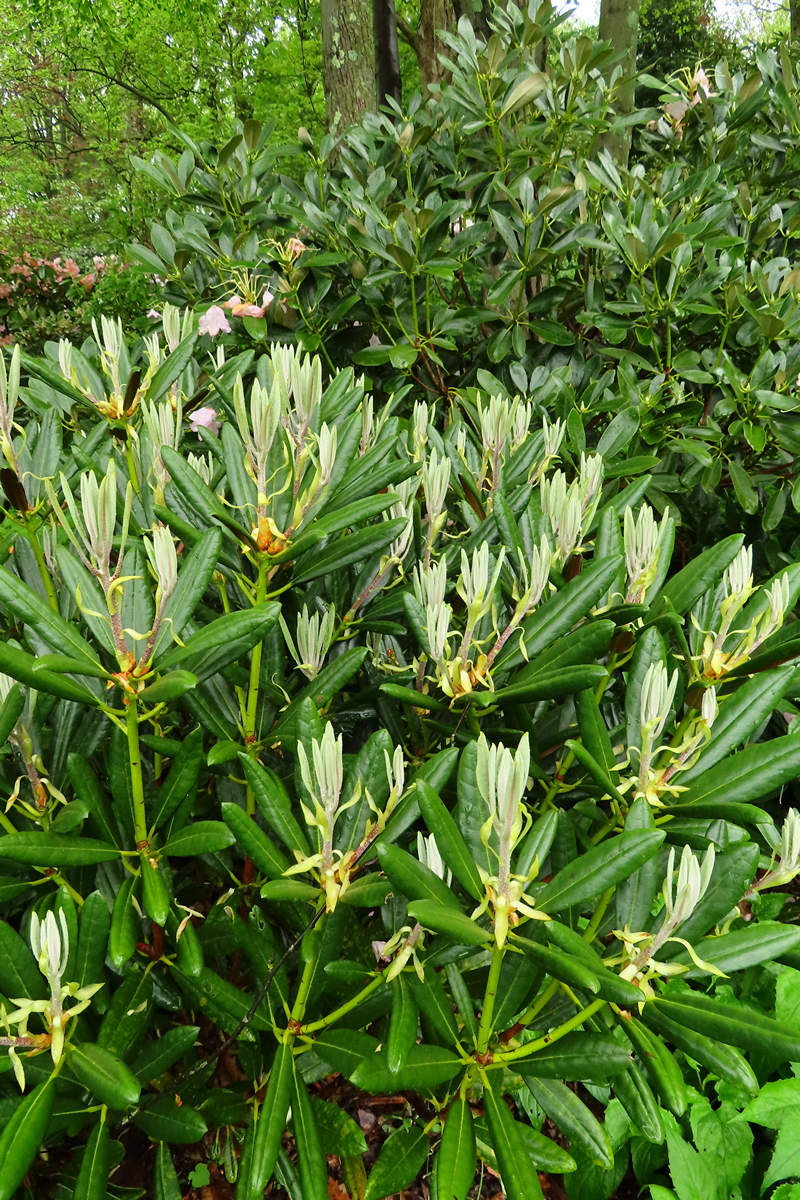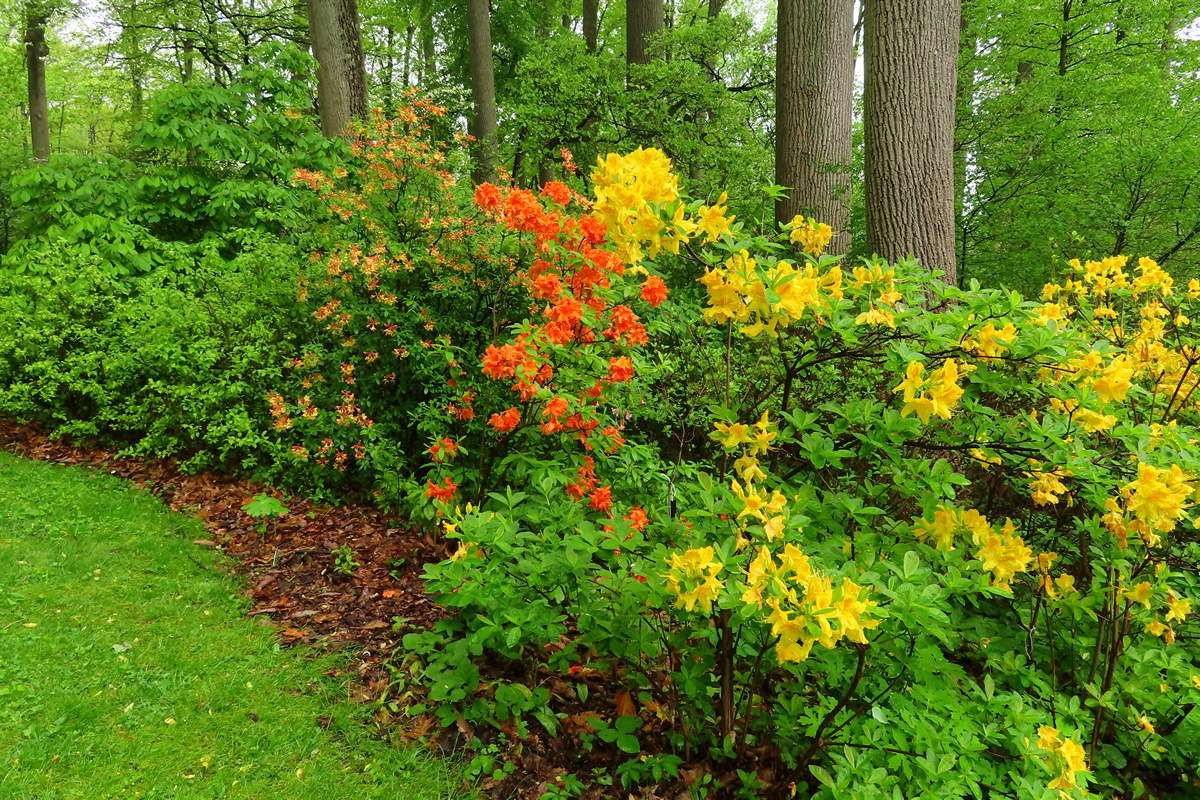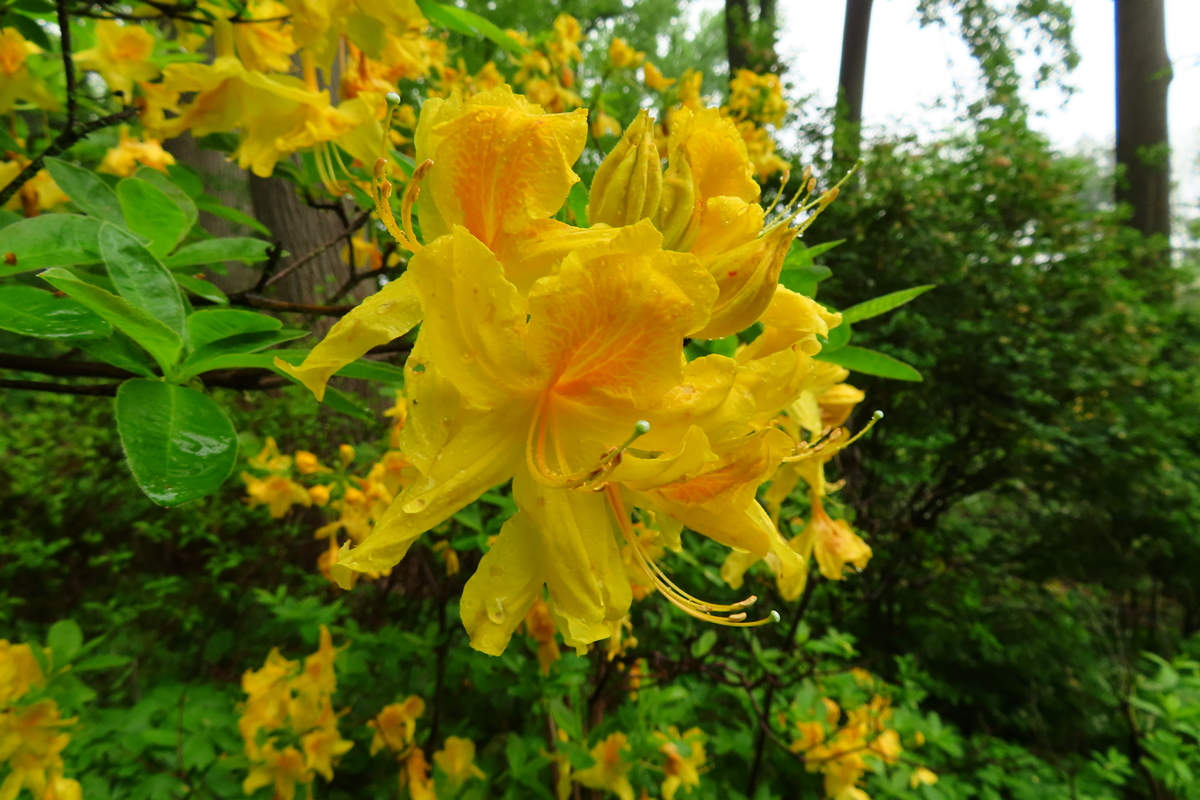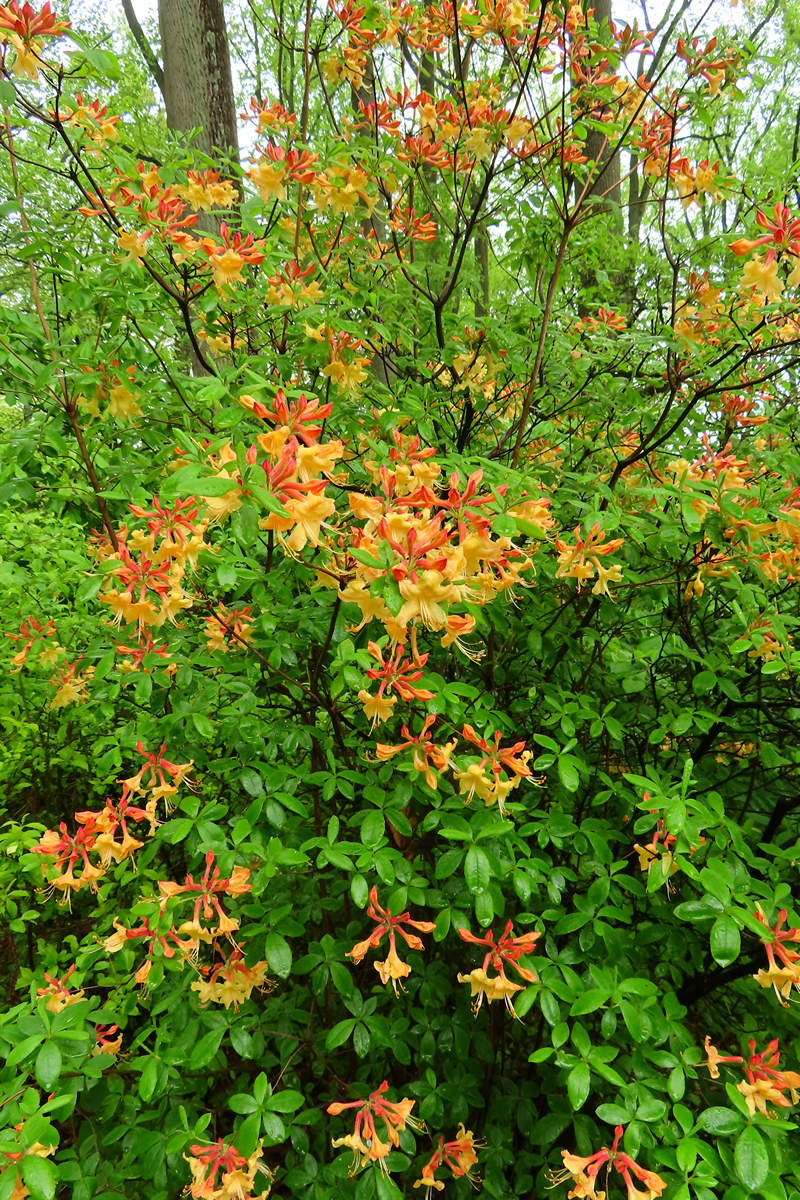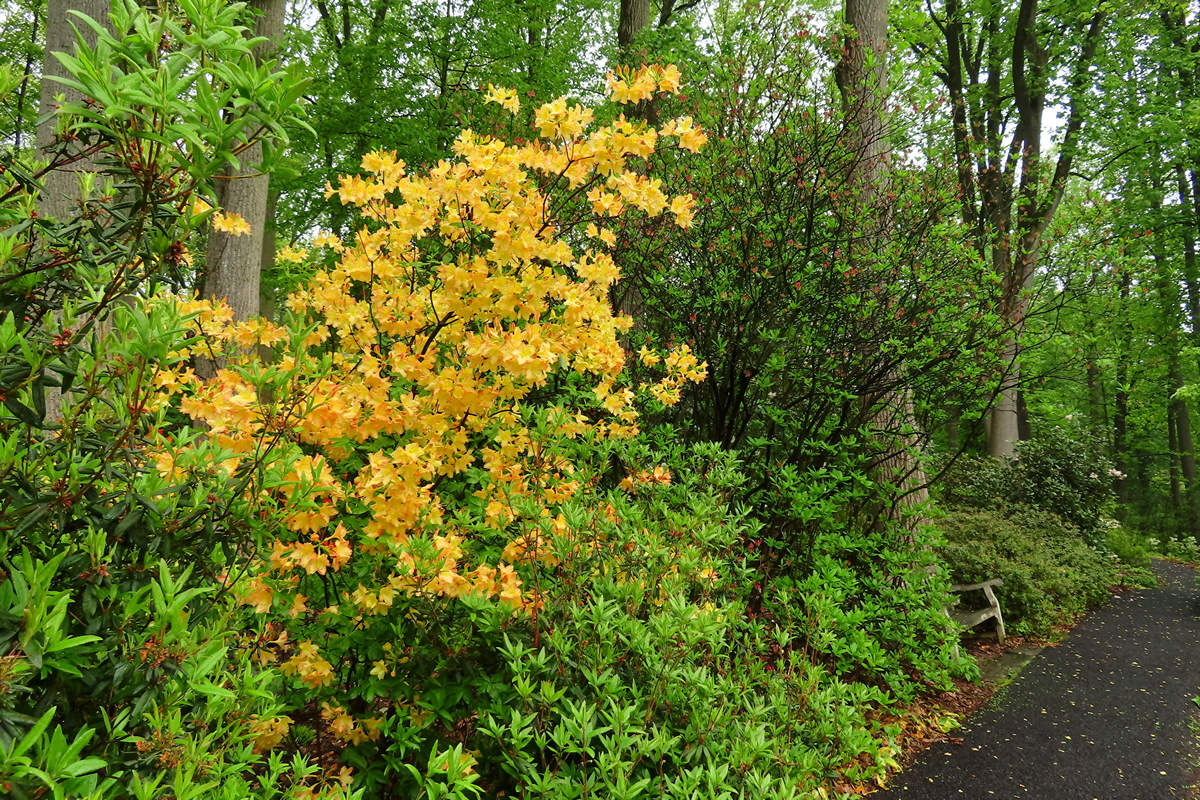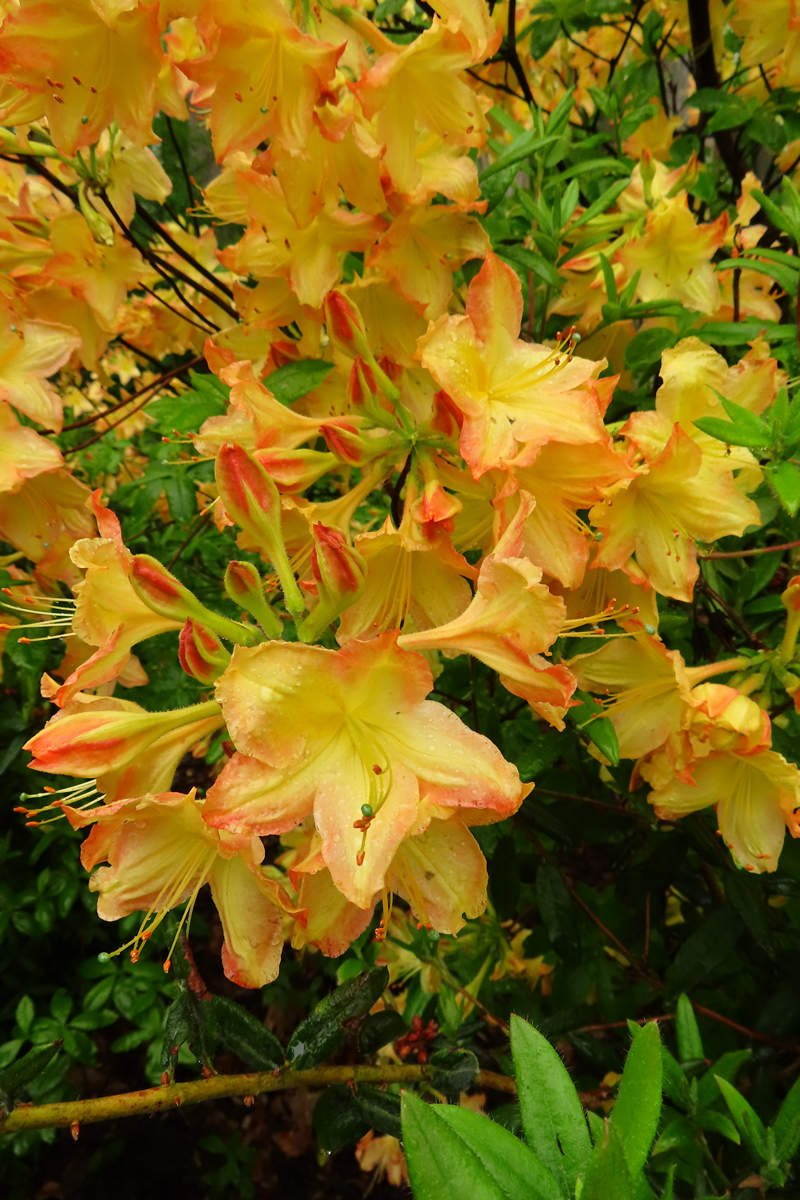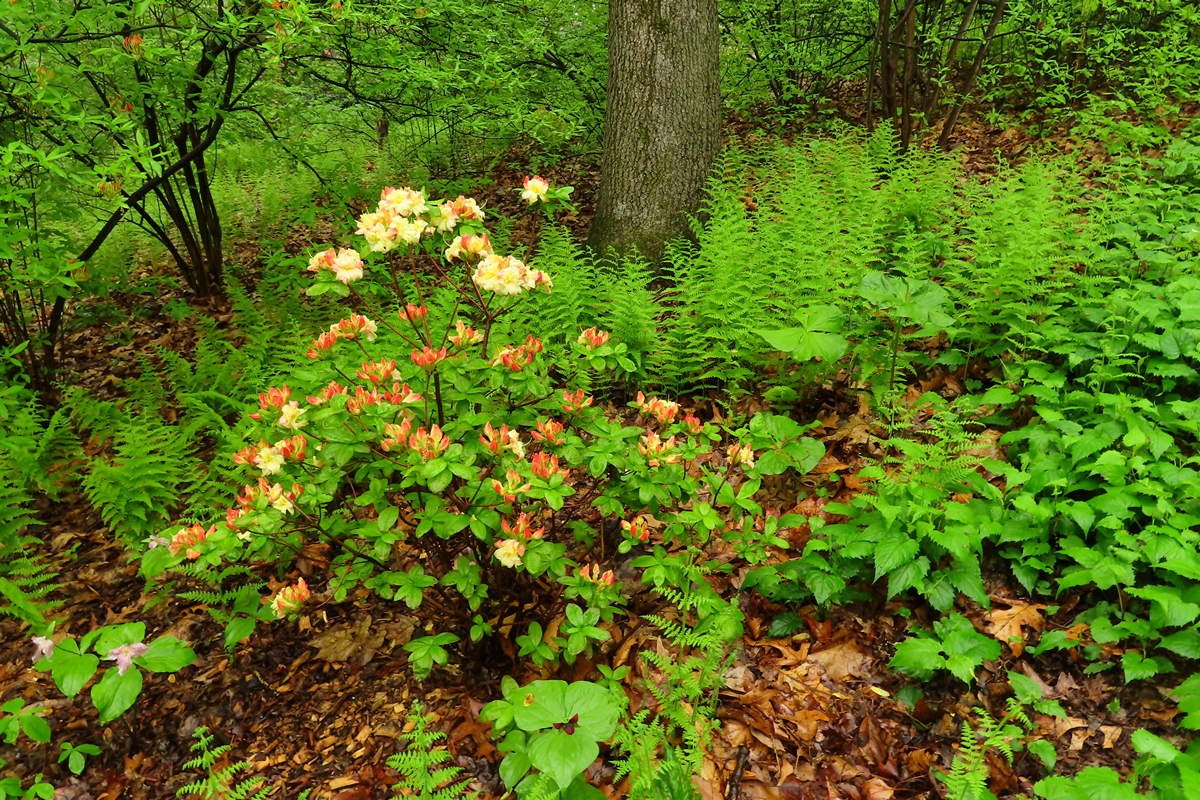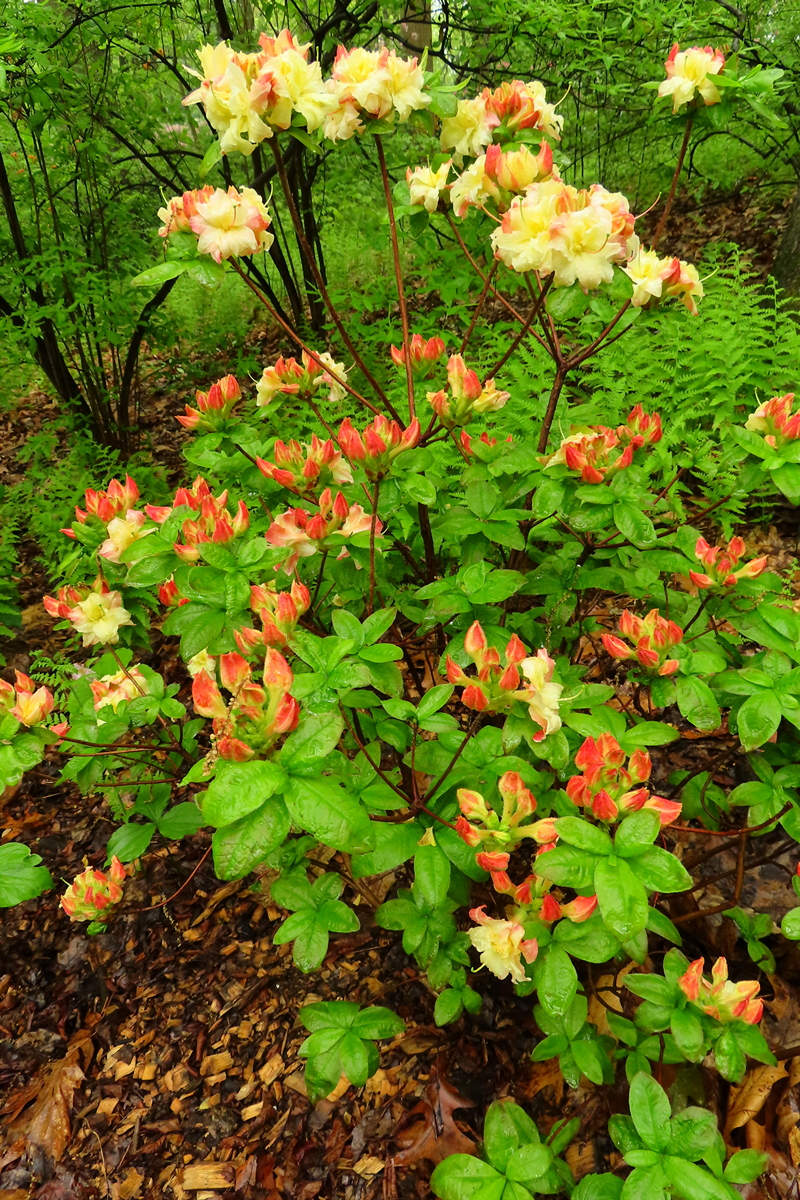Mike Breiding's Epic Road Trips: May 2022
Our 40th Wedding Anniversary Celebration
Dogs, Sushi, Jail Time and Long Wood
Jenkins Arboretum and Gardens: Rhododendrons and More
14 May 2022
Jenkins Arboretum and Gardens
Knowing my love of Rhododendrons Jerry suggested we might want to visit Jenkins Arboretum and Gardens which was on our way back to Morgantown and is known for its outstanding collection of Rhododendrons and Azaleas. Fortunately we took his advise and we were soon at the garden gate.
We had arrived a bit before opening time and there were already several cars lined up waiting to get in. The pouring rain was no deterrent to these lovers of Rhodies.
By the time the Garden gates opened the rain had diminished and when we got parked and out of the van it had stopped completely just as it had done with our visit to Longwood Gardens. Lucky us.
The history of Jenkins Arboretum and Gardens is a love story. It sprouted from the love between a husband and wife and their love of horticulture and nature.
The home and twenty acres on which the Arboretum was first planned were formerly the property of H. Lawrence and Elisabeth Phillippe Jenkins. Elisabeth and Lawrence were neither a wealthy nor a noted couple. They lived within their means and enjoyed the beautiful natural setting of their home. The Jenkins house, situated on a hillside and filled with wonderful woodland trees and shrubs, was perfect for cultivating her passion and love of nature.
When Elisabeth died in 1963, Lawrence wanted to preserve their 20-acre property as a living memorial to his wife. He chose to create the Elisabeth Phillippe Jenkins Foundation by his will, stating that the property should be developed into a “…public park, arboretum, and wildlife sanctuary for the use of the public and responsible organizations engaged in the study of arboriculture, horticulture, and wildlife for educational and scientific purposes.” Lawrence died in 1968 and his bequest provided a green oasis for the community and a perfect legacy to honor his wife by preserving the woodland and gardens she loved so much.
Source: www.JenkinsArboretum.org
Click on the photos below for a larger image.
Just a few feet from where we parked the van we got our first eye full of gorgeous rhododendrons.
This beauty is named "Wheatley" and was a result of the hybridizing work of Howard Phipps.
Howard Phipps Sr, was an avid horticulturist, plant collector and hybridizer. Mr. Phipps bred peonies, magnolias, and finally settled on rhododendrons. He had 1,000 bare root rhododendron plants shipped to New York from the Rothchild estate in England every year. He was close with Charles Dexter, the great hybridist from Cape Cod and some of his hybrids are still available in the commercial nursery industry.
Source: ErchlessOldWestbury.com
Jenkins Arboretum has a beautiful collection of deciduous azaleas as well as rhododendrons to say nothing of the evergreen azaleas.
Rhodies.
Deciduous azaleas.
Evergreen azaleas.
What's the difference?
Or, one might ask - what is their "sameness"?
All three of the above groups are Rhododendrons and in the same plant family, that being the Heath Family. Or to get formal - the Ericaceae.
And one might wonder how rhododendrons with their leathery green leaves, and deciduous azaleas with more typical leaves which drop in the fall and evergreen azaleas with their smaller leaves some of which will persist over winter could all be in the same plant family. That is because botanists classify them based on their reproductive parts (flowers) not the leaves or stems or habit of growth.
And it is not just the leaves which are so different. Some rhodies can get big. And I do mean BIG. Up to 20 feet tall and just as wide. And the dense leathery leaves all but hide the "bones" - the branches which support all those leaves and luscious flowers.
Deciduous azaleas on the other hand are generally much more upright. "Skinny" one might say with leaves and twigs which are quite obvious.
And evergreen azaleas? They generally grow wider than tall. But not always. And the smaller, more copious and somewhat leathery leaves often hide the branch structure.
Besides these 3 groups of plants there are others in the Heath family which may be familiar to you.
Have you ever eaten a blueberry?
Or admired the beauty of a flowering Mt Laurel?
Or enjoyed the tart tastiness of a cranberry?
These are all in the heath family and therefore "relatives" of the Rhodies and their kin.
The list goes on and on and world wide the heath family encompasses 4,000 species in 26 genera. But, for now let's just stick to the rhodies, shall we?
Deciduous azaleas can be real eyeball knockers. Some of the colors are so intense they can be hard to look at.
Unlike the big leaved rhodies, once these flowers have faded and fallen what is left holds little beauty to most eyes.
Jenkins has a nice sampler of native plants such as this group of Cinnamon ferns (Osmundastrum cinnamomeum).
You may have noticed this photo, like some from Longwood, is a little blurry. The heavy overcast both days and the early morning hour here at Jenkins in combination with the tree canopy did not provide a lot of light for picture taking. Unfortunately I did not pay as close attention to this as I should have.
Oh, my. This is the fantasy of every lover of rhodies and their kin. I never realized that fantasy but I have met a few folks who have, most notably several members of the Mid Atlantic chapter of the American Rhododendron Society (MAC-ARS).
HOLLY SPRINGS LEGACY GARDEN
Highlight: This Holly Springs Legacy Garden features a collection of non-native evergreen azaleas that were developed by Colonel Pete Vines. Pete selected these plants for their dwarf to medium size, large blossoms, and good cold hardiness. Although he developed, grew, and sold these plants at his nursery in Virginia, he named them after the town of Holly Springs, Mississippi. The azaleas planted in this garden were preserved through a generous partnership with the Northern Virginia Chapter of the Azalea Society of America. ...Source: Jenkins Arboretum Informational Signage
Holly Springs? What a surprise. One upon a time I visited Holly Springs, Mississippi. Little did I know of its connection with the azalea breeding efforts of Pete Vines.
I was curious about why an azalea hybidizer from Northern Virginia would have named a series of his hybrids after someplace in Mississippi so I decided to try to find out.
Begin Google Search
End Google Search
Search Results: None
Fortunately MAC-ARS member Sandra sent me a lead about Steve Henning and all his Rhody Writing. I went to Steve's site http://RhodyMan.net/ and found a wealth of information about Rhodies but nothing specific answering the question about the name origin of Pete Vine's Holly Springs series of azalea hybrids.
I found Steve's email address and asked him about this. Here is his prompt reply.
Thanks for asking that question. The answer is interesting:
From Pete Vines 1990 catalog:
"The name for the hybrid group – “Holly Springs” – is taken from a small but charming antebellum, Northern Mississippi town near The University of Mississippi, where I attended college. Holly Springs was also where I met William Faulkner, we had the distinction of sharing the same ‘bootlegger’."Source: Pete Vines 1990 catalog via Steve Henning
The University of Mississippi (Ole Miss) located in Oxford MS is 30 miles south of Holly Springs. William Faulkner lived at Rowan Oak in Oxford from 1930 until his death in 1962.
Steve also included a link to the Azalea Society of America's Holly Springs page which lists all of Pete Vine's name and unnamed crosses.
OK! On with the tour.
The heavy rains seemed to have little impact on the beauty of this scene.
These simple and intimate paths were quite the change from the wide open spaces of Longwood Gardens.
Although a bit past their peak these lovely azaleas were still looking pretty good.
I am not sure which species of lady slipper this is. Perhaps Cypripedium parviflorum?
Betsy and I now have 34 rhodies at Cabin №18 in Morgantown. I doubt we will live long enough to see them grow to this size but we are hopeful.
What a lovely spot for a stroll.
Here is what rhodie growers hope for: lots of "breaks". Each new shoot has the potential to produce a flower bud so the more "breaks" the better.
David Leach once told me when were talking about who likes what flowers: "Everyone likes different wallpaper". Indeed. I like this one!
My, oh, my. Would I love to have this beauty at Cabin №18.
I found the label for this one. Its name is Morgenrot ('Morning Red'). German hybridizer Hans Hachmann created this beauty.
Perhaps the next time we visit we will "set a spell".
Yes, more and more and more...
More nice plants of the cinnamon fern.
These lovely white violets were flanked by lady and ostrich ferns.
As friend Becky would say: "Wowzer!"
This red horse-chestnut sure was loaded with flowers!
A closer look at the flowers of Aesculus × carnea.
Talk about yellow! What a stunner.
I wonder if they deadhead all these rhodies?
Even the buds are gorgeous.
The silvery color of the new shoots makes me think this might have some Rhododendron yakushimanum in it.
As you can imagine Betsy and I were starting to get overloaded by now. But wait! Just a few more shots!
Are they all starting to look the same?
And that is the last shot of the day. What a wonderful place! I sure wish Jenkins was just a few hours closer to Morgantown.
We made our way back to the top of the hill and stopped at the visitors center for a bit and then were back on that cursed PA turnpike which we would be on until our final stop.
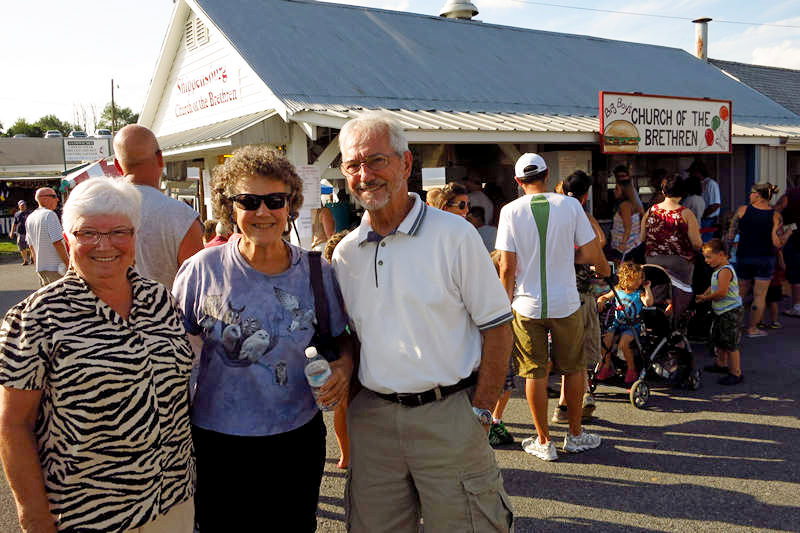 After two hours of driving and what seemed like worlds away we were visiting with these two characters.
After two hours of driving and what seemed like worlds away we were visiting with these two characters.
Meet Lil and Lou. They are neighbors of ours in Tucson Estates. The photo was taken when we visited with them in July of 2015. No matter - they have not changed one bit. Lil and Lou live in the Ridge and Valley province of Pennsylvania which in my book makes them Hillbillies just like Betsy and me !
We sat on the porch with them and chewed the fat for awhile and were then on the road. Three hours later we were back at Cabin №18 and soon after that we were enjoying a quiet Happy Hour on The Slab.
And so ends another memorable Anniversary trip. Thanks for coming along and thanks to all for making it such fun!
And now, as they say in some TV commercials: "But WAIT - that's NOT all".
Check out Betsy's photos of Longwood and Jenkins.
See you next time...
Mike and Betsy
